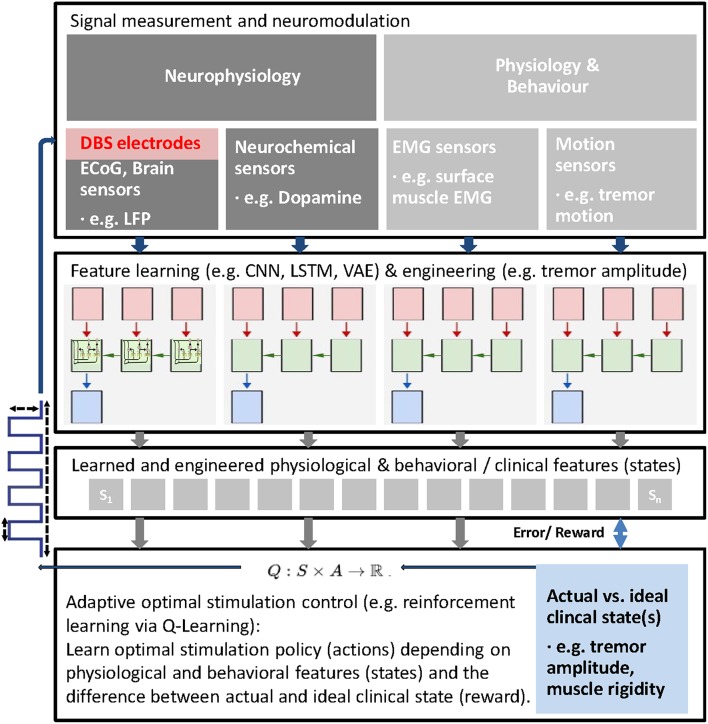Figure 1.
Schematic of general adaptive closed loop DBS for adaptive adjustment of deep brain stimulation (DBS) parameters based upon real time patient measurements, such as electrophysiological signals (e.g., LFP, ECoG, EMG), neurochemical parameters and behavioral measurements and machine learning. First, latent features from different possible signal sources are learned using machine learning approaches to extract behavioral (clinical) states (e.g., bradykinesia, rigidity, tremor) and corresponding and predictive latent neural states (e.g., beta and high frequency oscillations). Then, actual states are compared with ideal states to compute a reward and stimulation parameters (e.g., VTA, stimulation frequency, etc.) adjusted and finally learned via reinforcement learning (Q-Learning is shown as an example). In this closed-loop paradigm, the stimulation parameters (actions) are adjusted within clinical limits based on the reward and the extracted latent states.

